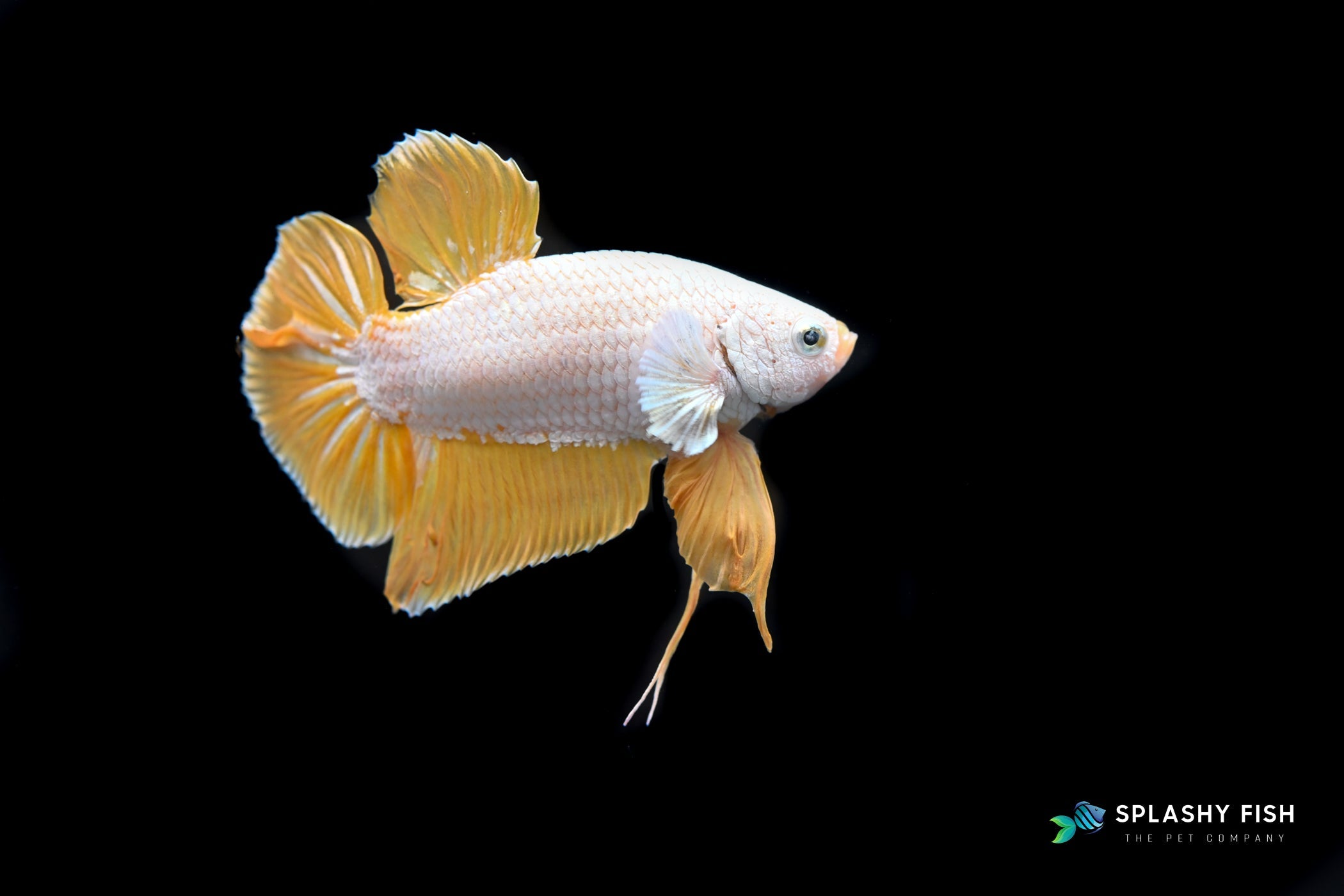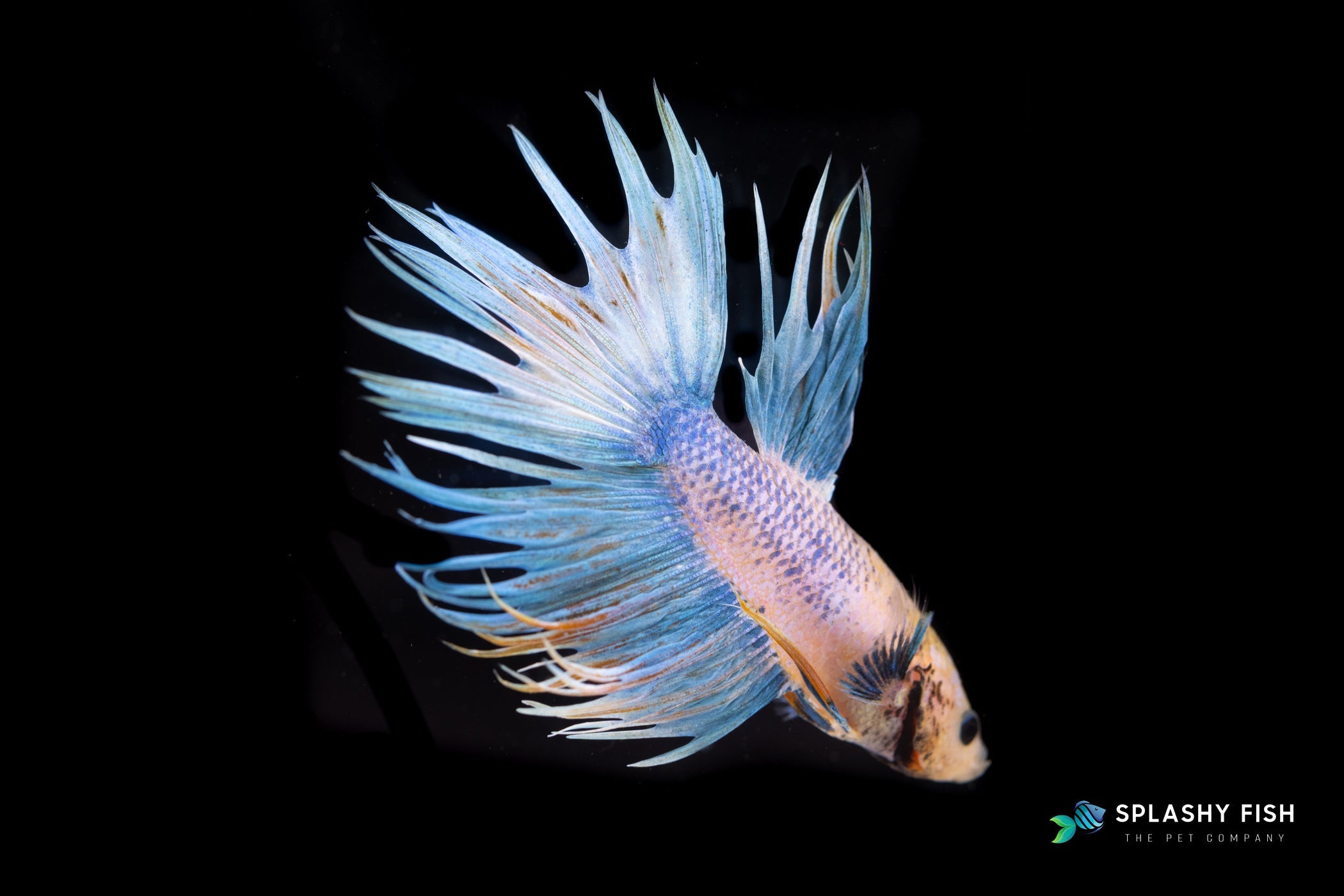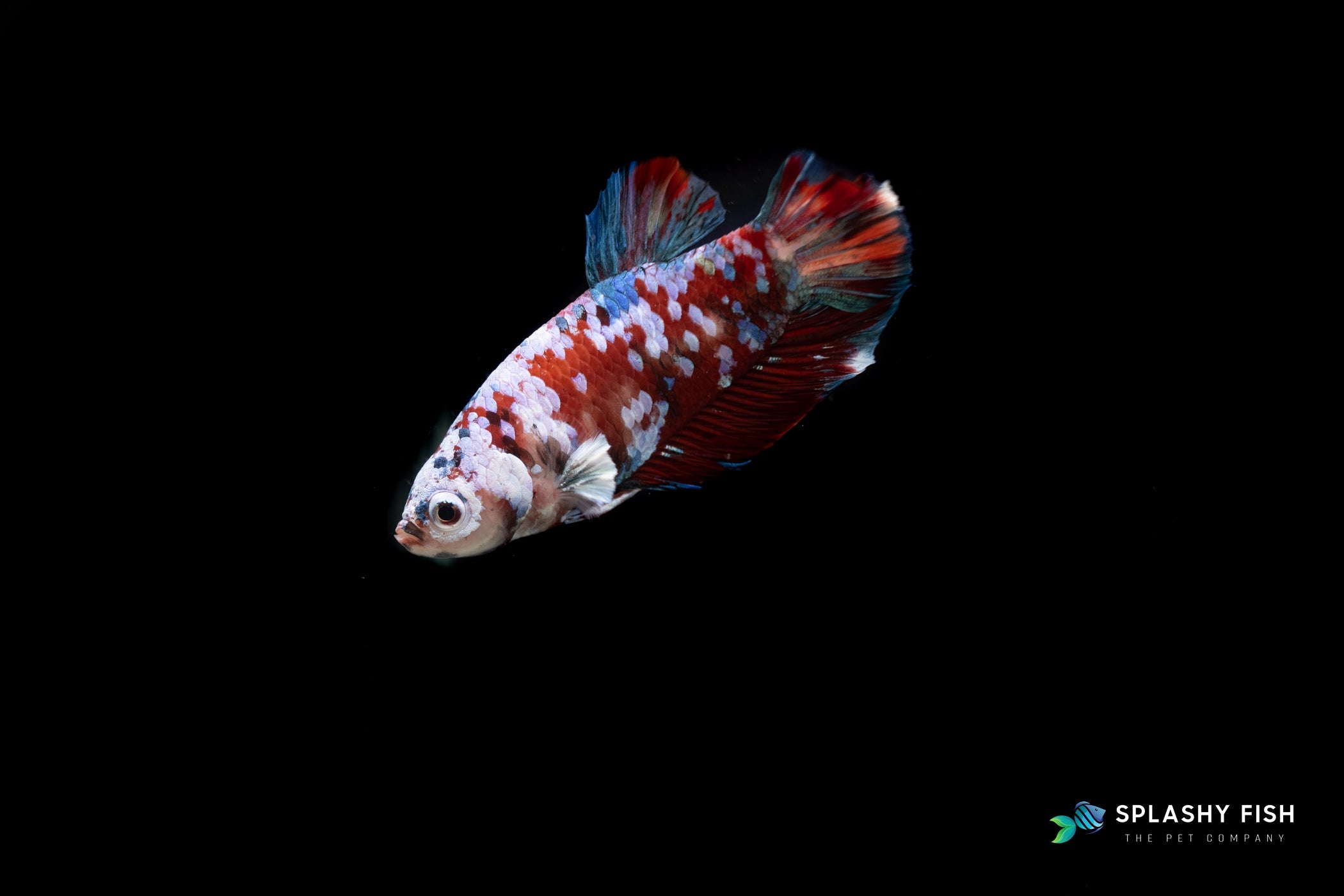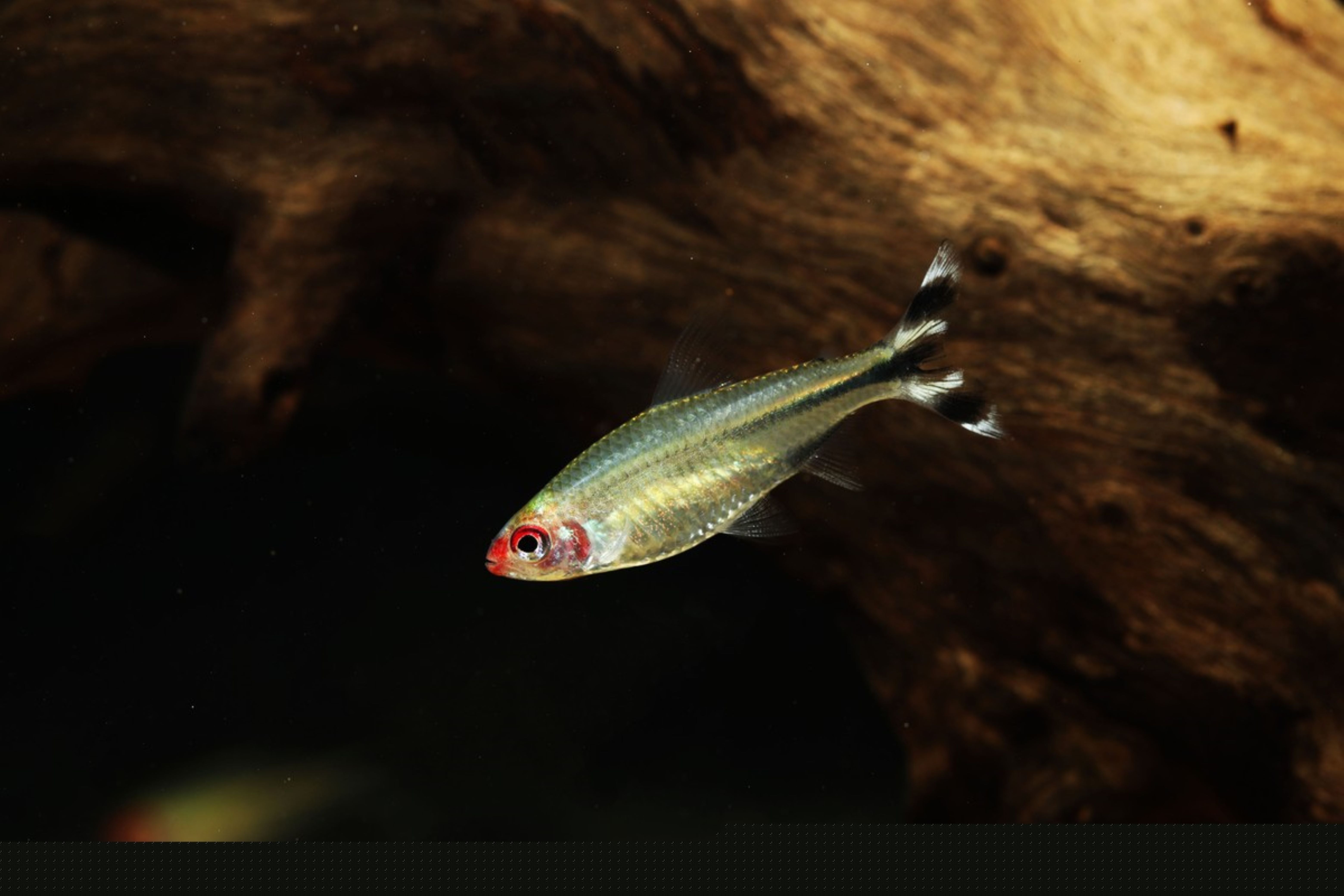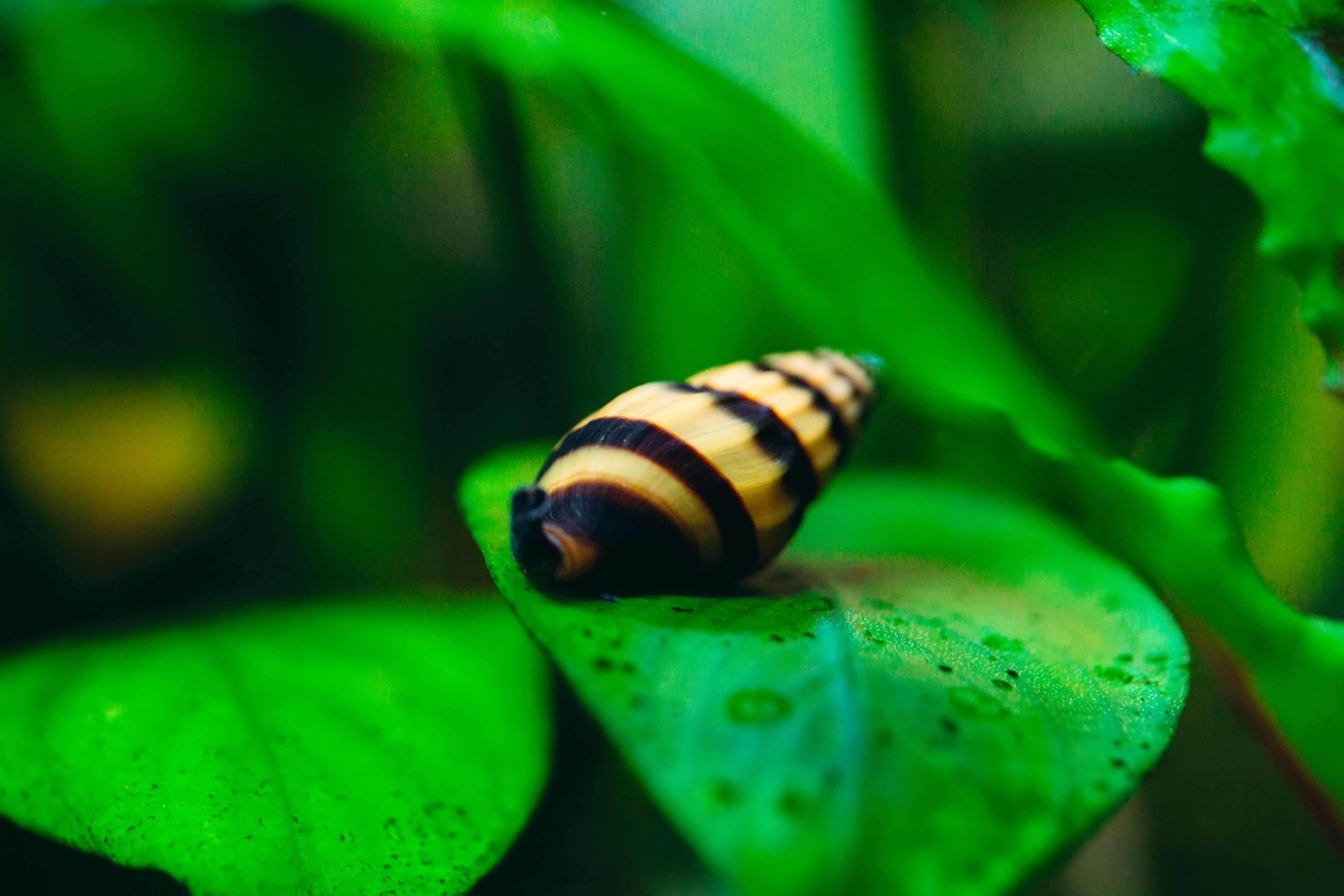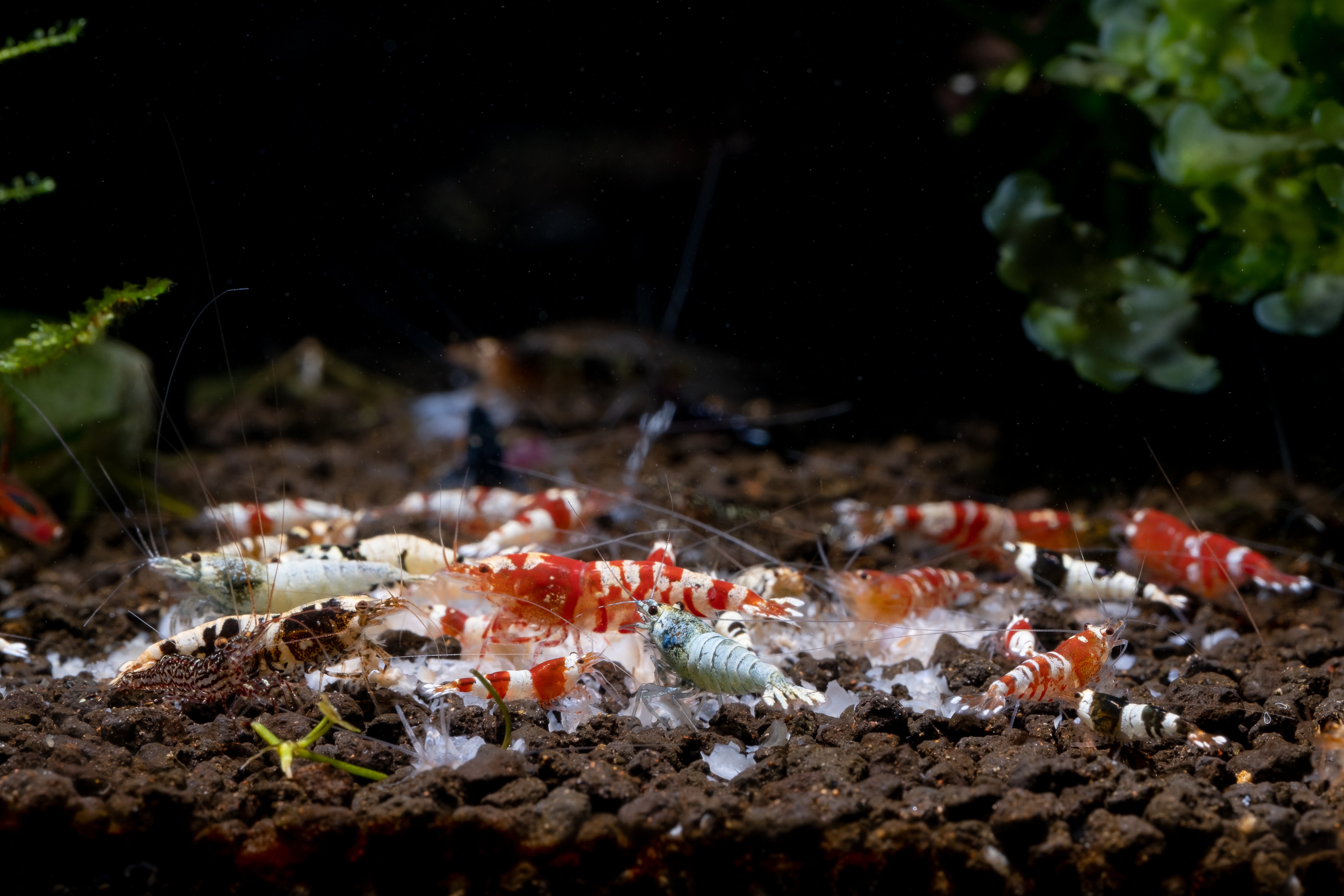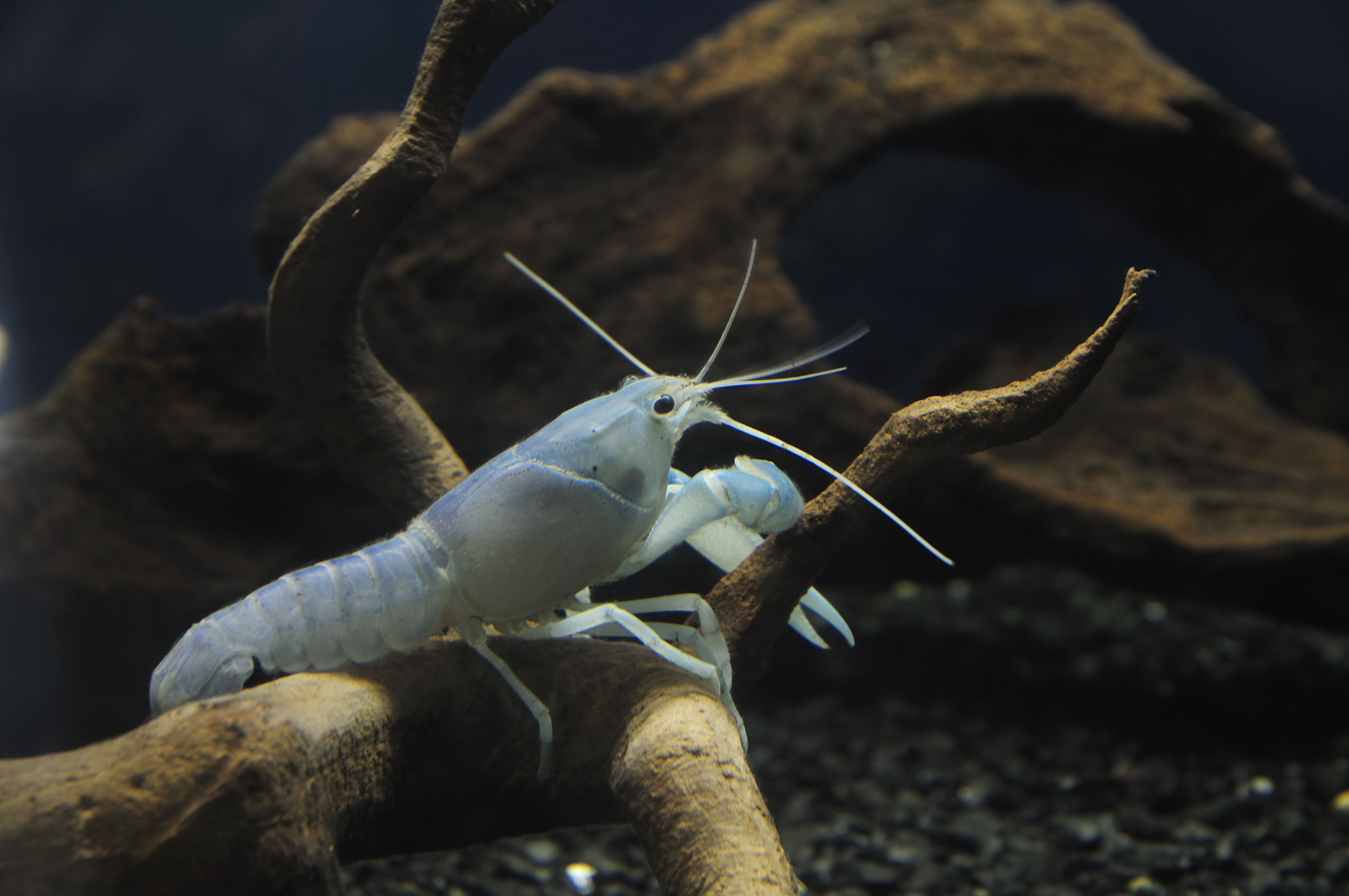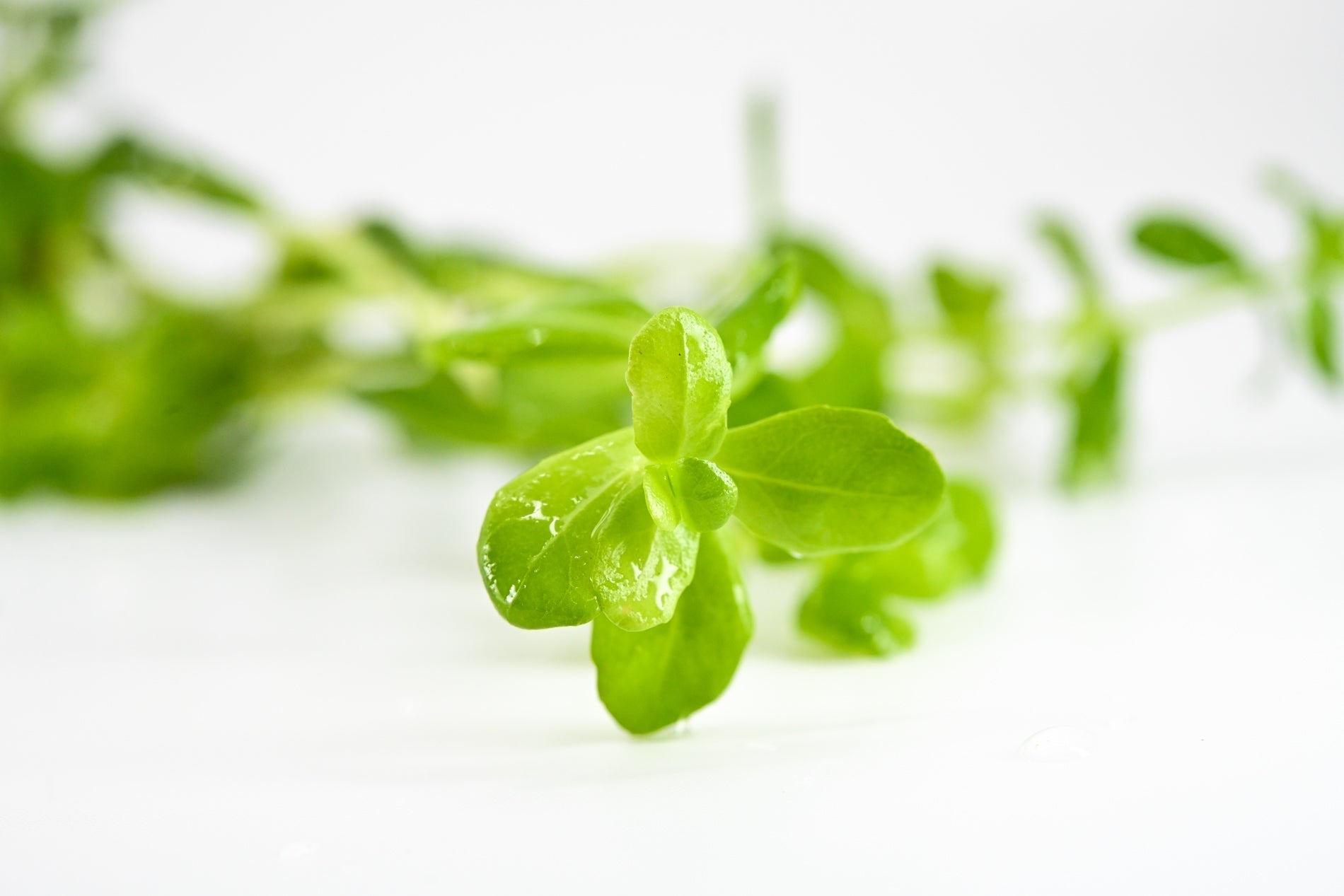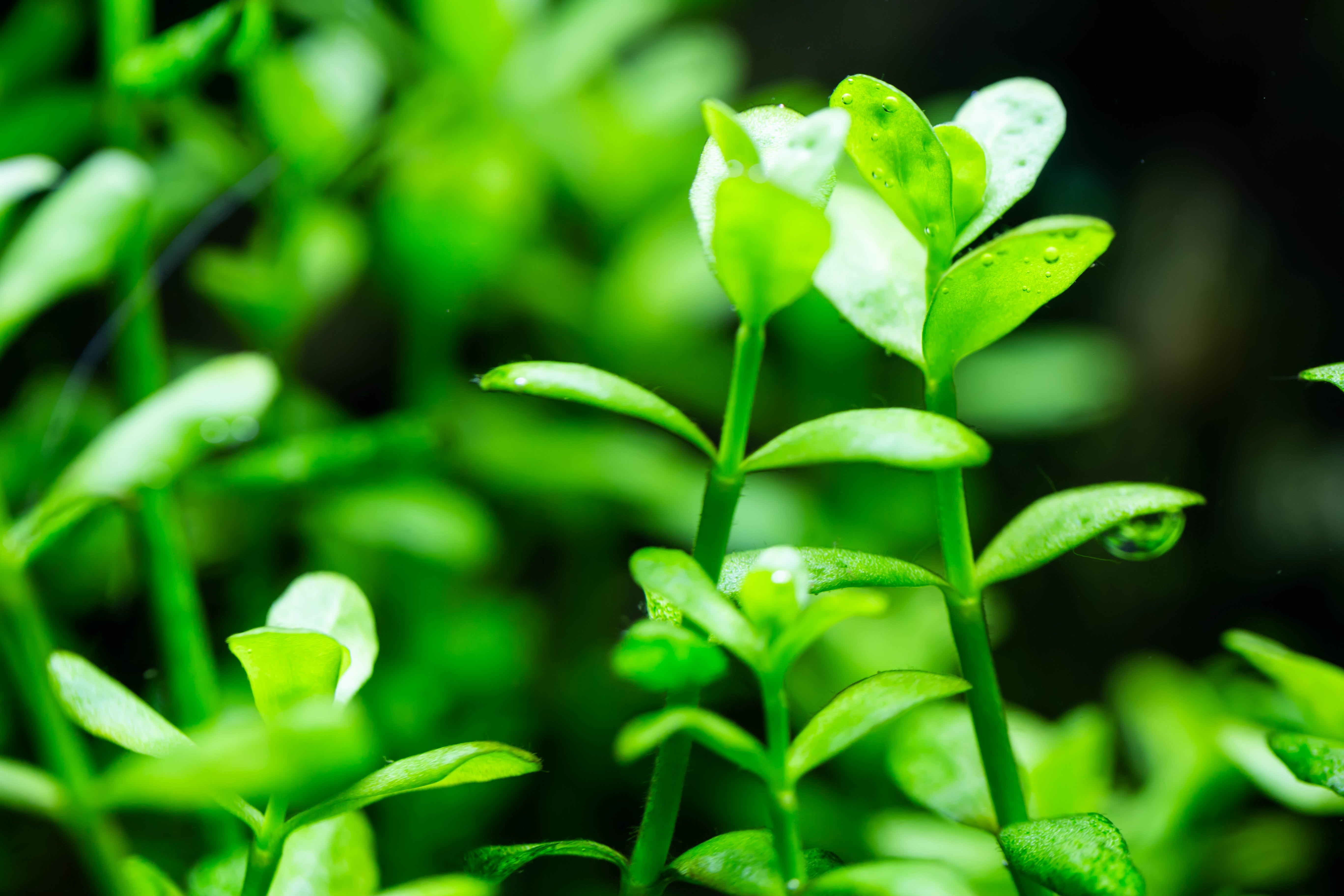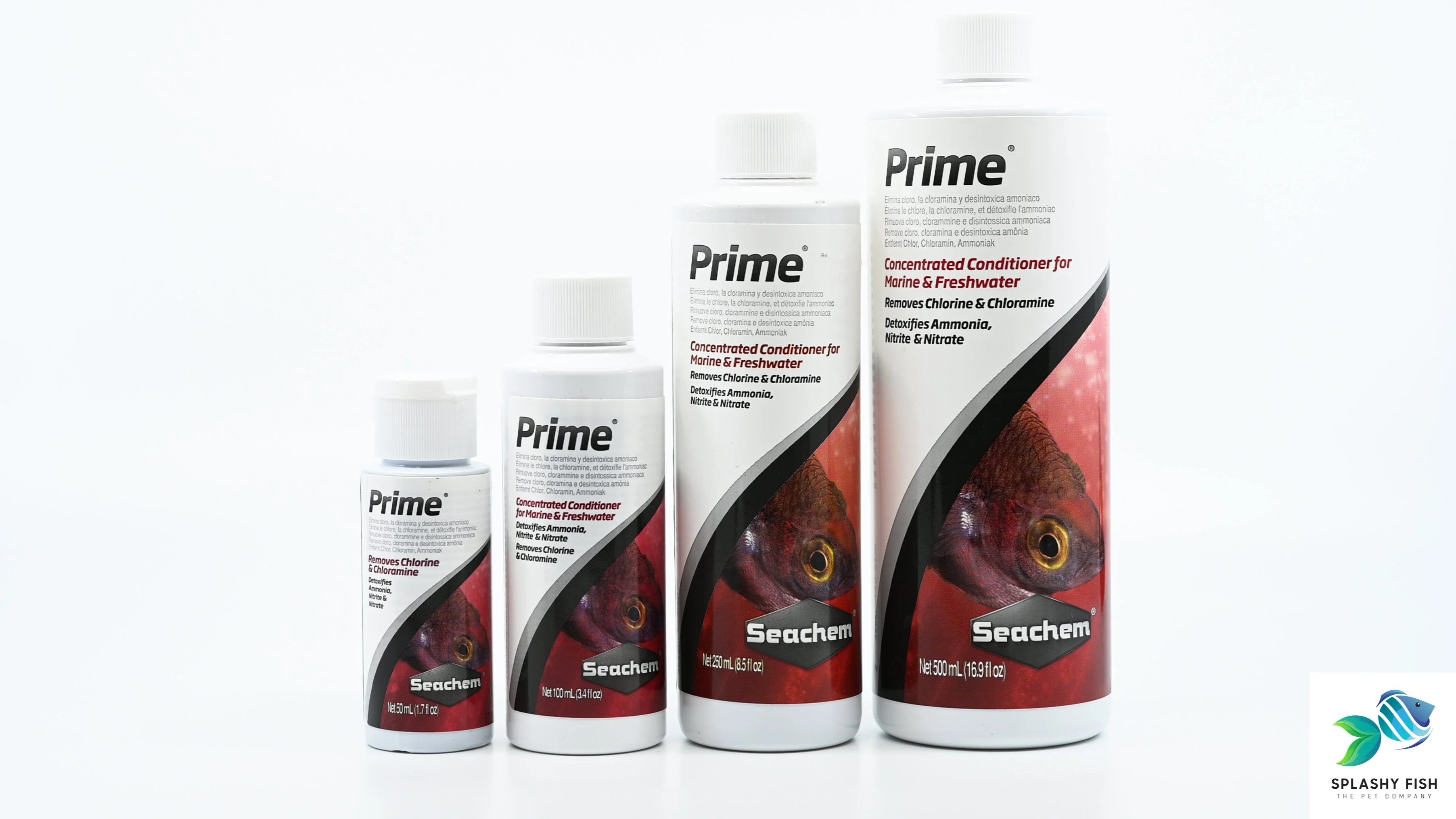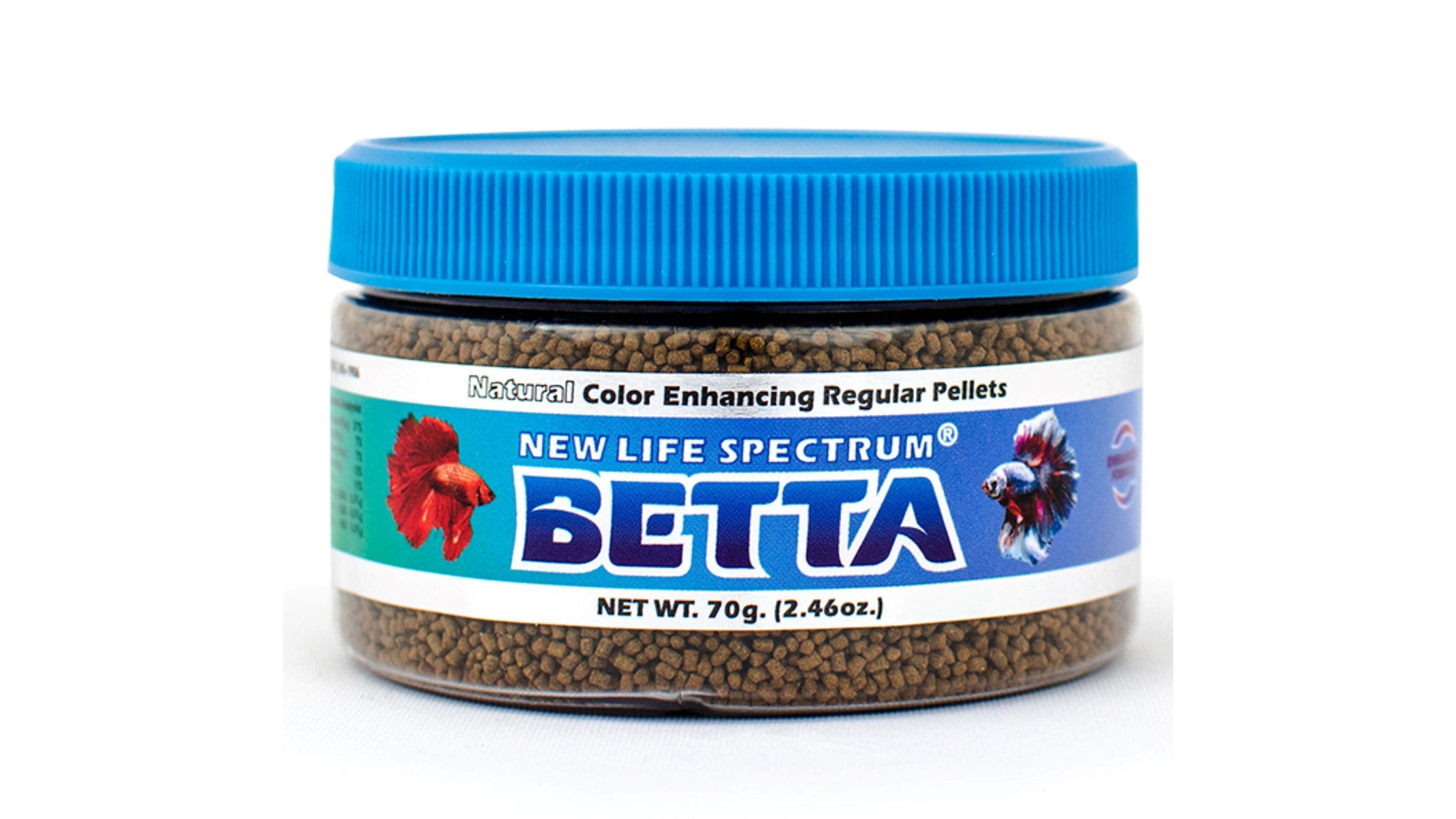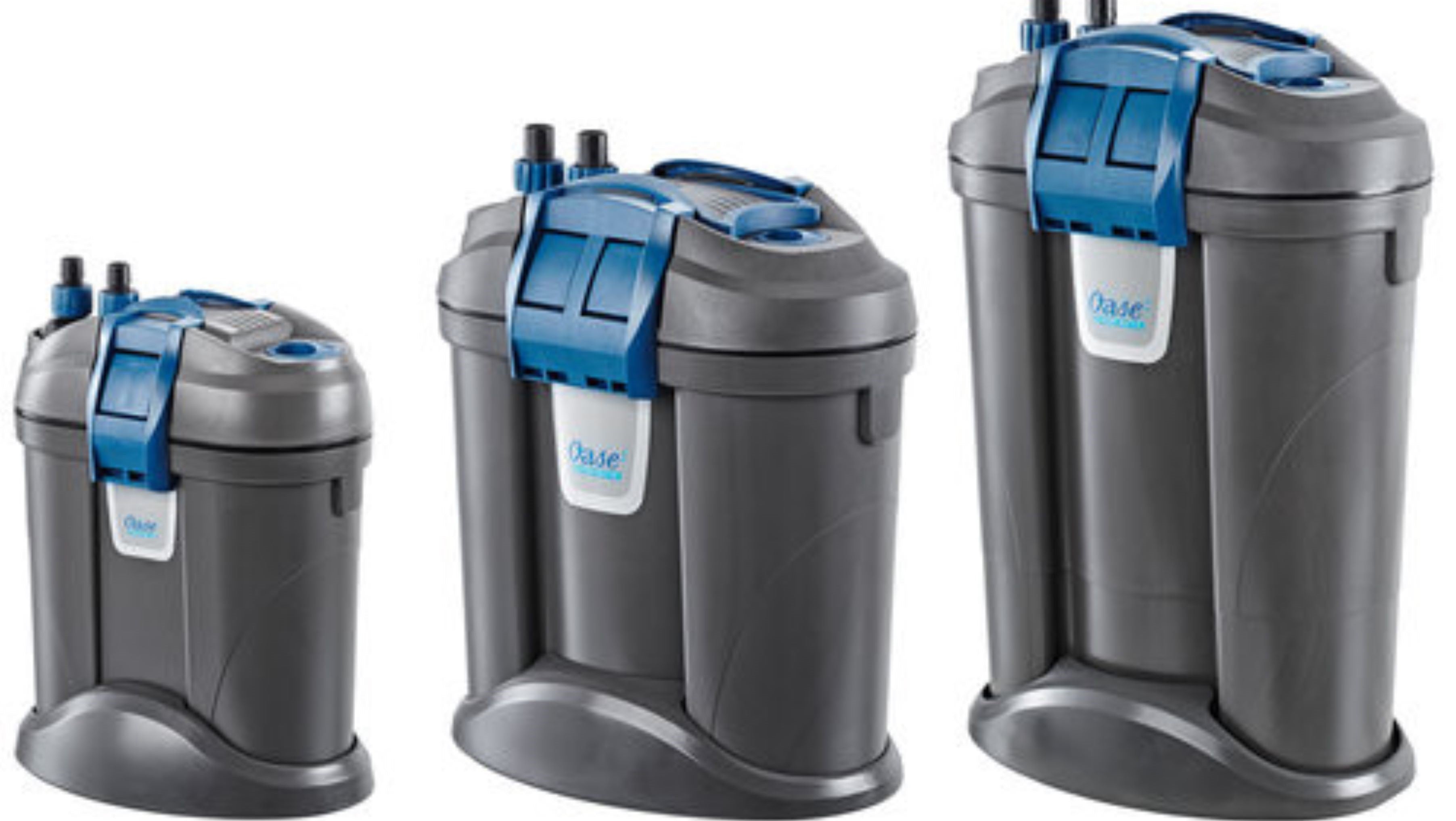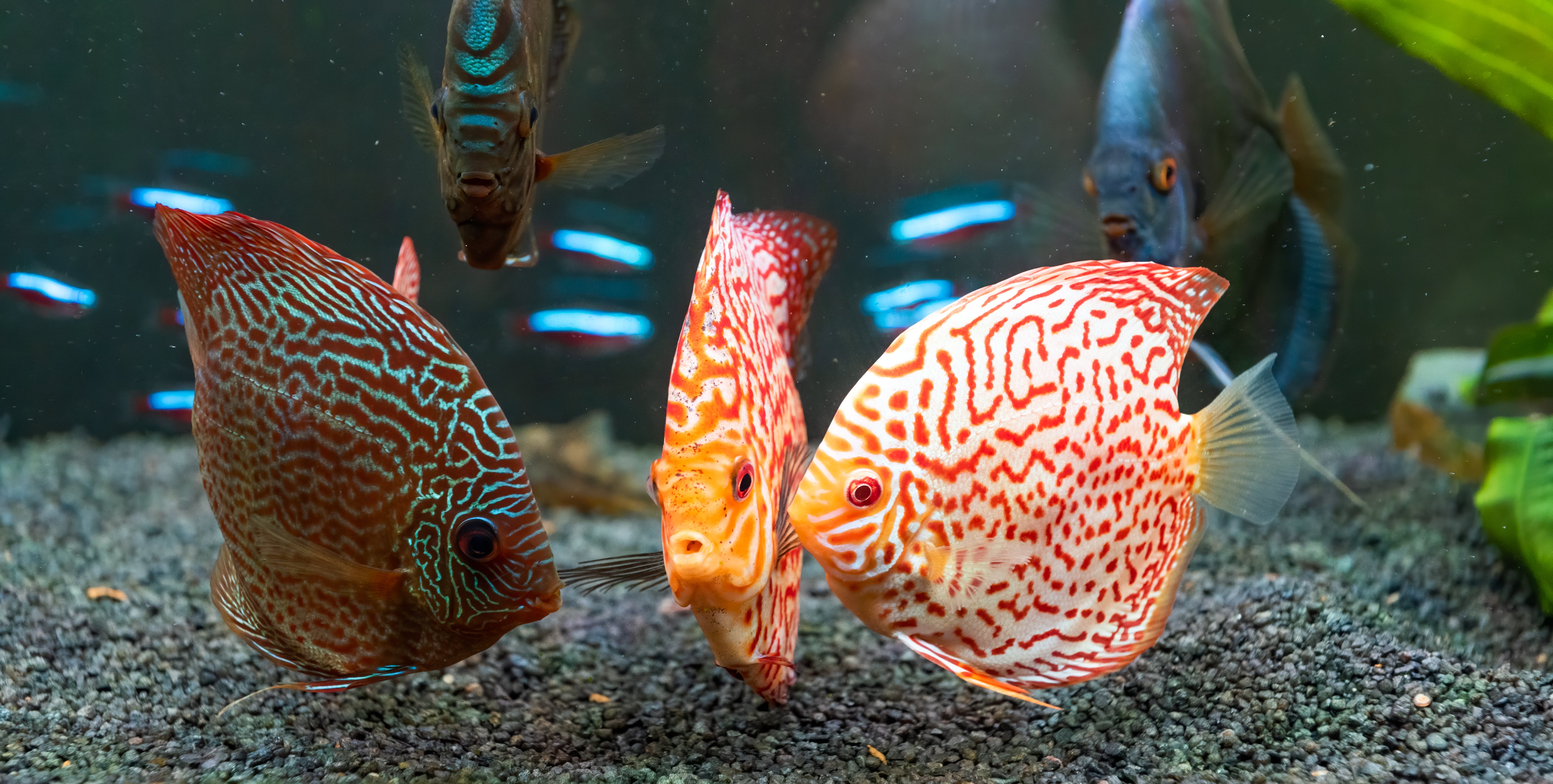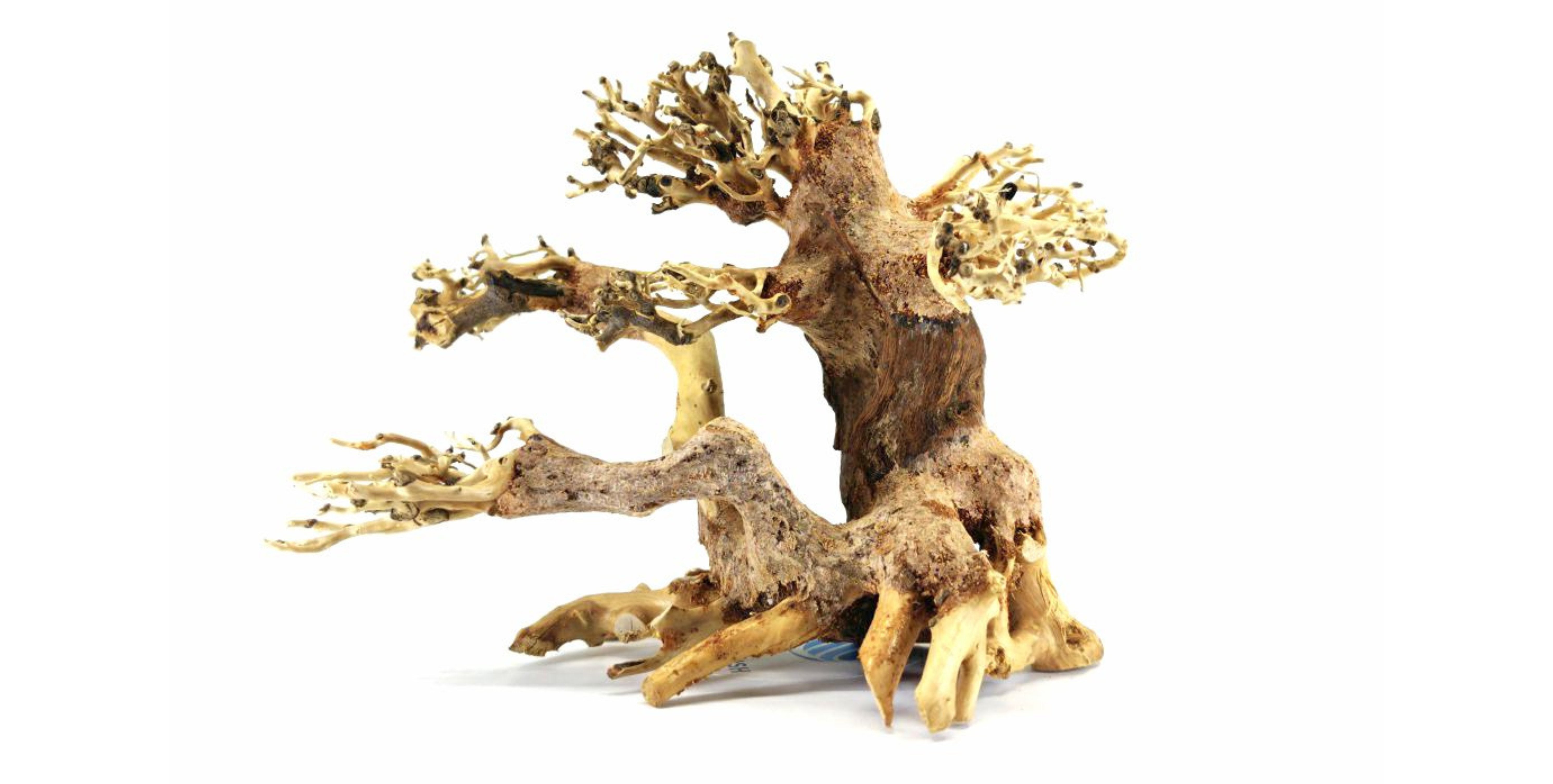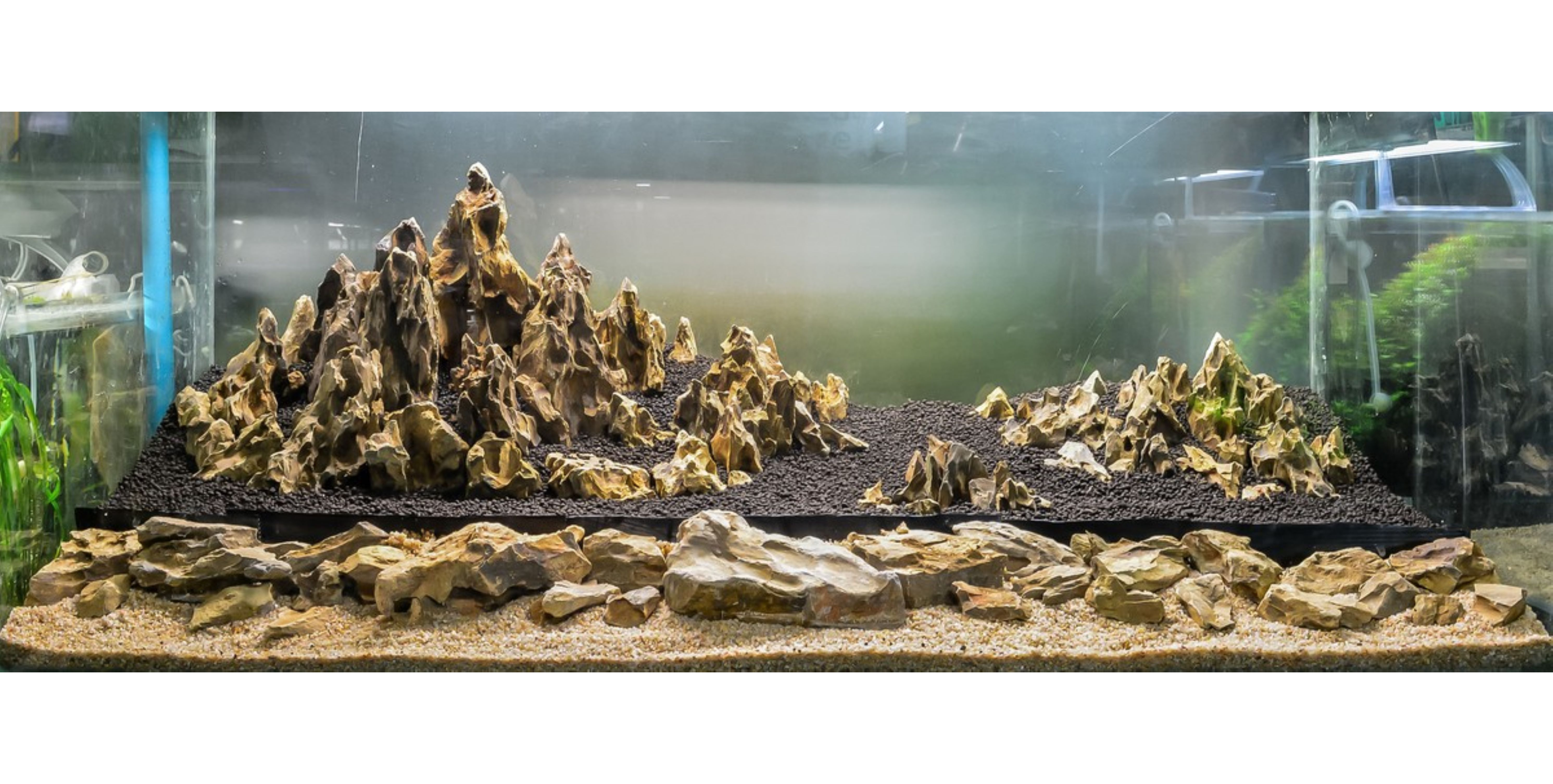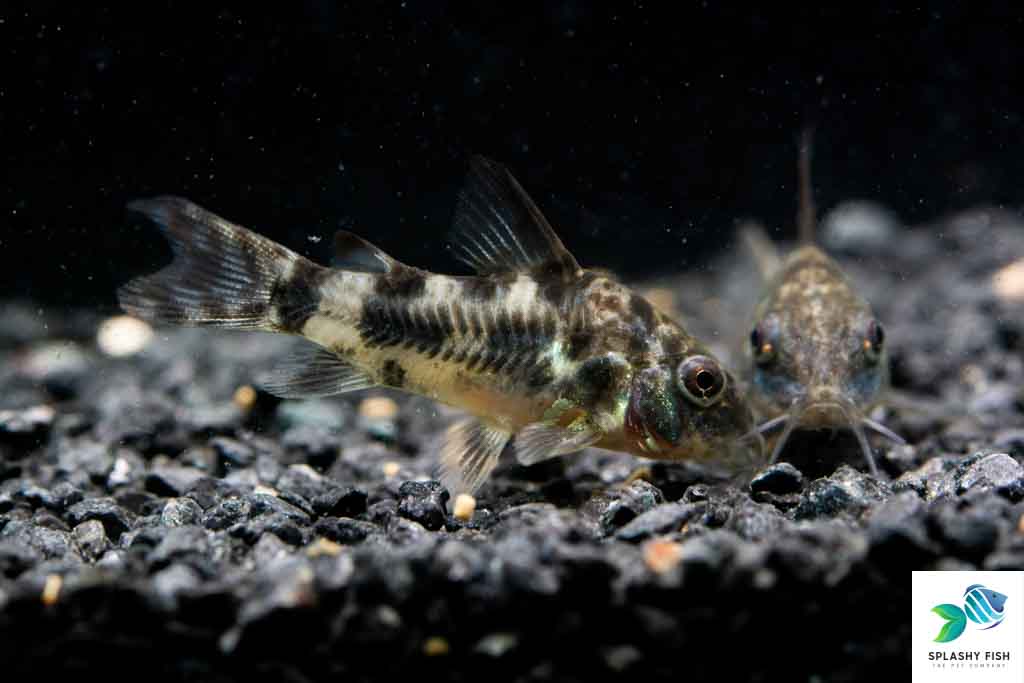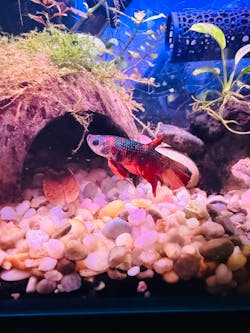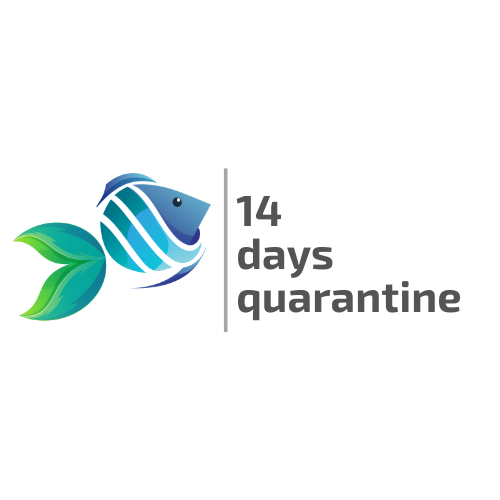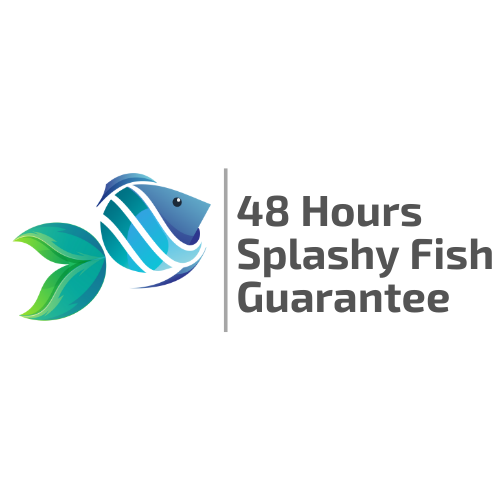Peppered Corydoras Catfish (Paleatus Corydoras)
- In stock, ready to ship
- Inventory on the way
- Live Arrival Guarantee
- All our live fish, shrimp, snails are care with love and passion, when through minimum of 14 days quarantined and shipped from Splashy Fish facility in Springfield, Virginia, USA

This is only apply to live fish order.
What is Our Live Arrival Guarantee?
Benefit from our extensive experience in shipping live fish. In 2021, our records indicated a mere 0.5% dead-on-arrival (DOA) rate for all live fish orders, compared to the industry standard of 1.5%. These numbers translate to only 5 out of 1000 orders experiencing DOA fish.
At Splashy Fish, customer satisfaction is our priority. That's why we provide a 100% Live Arrival Guarantee on all animals shipped via USPS, UPS, or FedEx. Please note - Splashy Fish reserves the right to void Live Arrival Guarantee protection under the following circumstances:
- The customer has chosen USPS First Class Mail as a shipping method.
- The shipping address is a PO Box address
- The order was refused delivery by the customer.
- If the order is returned to the sender for any reason. For instance, an incorrect shipping address, an undeliverable address, etc.
- The order was held for pick up at USPS, UPS, and FedEx offices for longer than 24 hours after the last update on the tracking number.
- The Live Arrival Guarantee claim does not include all the requirements mentioned below
- The Live Arrival Guarantee claim is made after the claim period mentioned below.
- The animals are not in their original packaging
Live Arrival Guarantee Claim Period:
For Live Fish and other invertebrates, one and a half hours (1.5 hours) after the posted delivery time.
For Snails: 48 hours after the posted delivery time.
Steps to claim Splashy Fish's Live Arrival Guarantee:
- Take a picture of the shipping box and the shipping label.
- For live fish and other invertebrates: Please provide two pictures of each bag (containing the dead fish) upon arrival. Ensure the images display the bag in its original, unopened condition with the original rubber band intact
- For Snails: Position the snail in one corner of the tank. If the snail does not move within 48 hours, please take several pictures of the snail's opening
- Send an email to DOA@splashyfishstore.com with the subject line: DOA and Your Order Number, or message us on social media.
- In the body of the email, include your tracking number.
- The claim must be sent within the claim period mentioned above.
After submitting the required information, please allow us 1-3 business days to determine the cause of the issue. If the claim is valid and approved by our team, you will
- Receive a store credit for future purchases, excluding the shipping cost, of the dead-on-arrival fish
If the Live Arrival Guarantee claim does not meet all listed requirements, Splashy Fish reserves the right to reject it.
Shipping live animals and plants is a complex process, and temperature plays a crucial role in ensuring the safe and secure delivery of your order.
If the highest daytime temperature in your location and the lowest nighttime temperature here in Springfield, Virginia—where our facility is situated—fall below 40°F or exceed 90°F, we will proactively delay your order. This measure is taken to prioritize the well-being of the animals and plants.
For the safety of our living cargo and to protect your investment, we retain the right to suspend shipping as necessary due to extreme weather conditions. Our Splashy Fish team will assess the situation and determine if it is unsuitable to ship, considering the safety of the animals.
To stay informed or address any questions or concerns, feel free to reach out to our dedicated Splashy Fish Support team via email at support@splashyfishstore.com.
Once our team prints and packs your order, we'll notify you via email. This notification will include your tracking number and the expected arrival day. If you opt for UPS 2 Day shipping, your package should arrive within 2 days after shipment. Similarly, if you choose UPS 1 Day, your order will reach you the day after it is shipped. In the case of orders containing only plants or dry goods, they may be shipped via USPS, provided that this is the selected shipping option during checkout.
We ship all of the customer orders from our warehouse located in Springfield, VA. We pack and ship our orders depending on the orders with the exception of someday we cannot ship out live fish.
All Orders: will be shipped out from Monday to Thursday each week for overnight shipping by UPS.
Sunday: (Splashy Day) Today is the day we let our hard-working team members and our fish to destress and ready for the following week's shipment.
For more information regarding about shipping please visit us our Shipping Policy and Schedule
The Peppered Corydoras Fish, also known as the Peppered Cory Catfish or simply the Peppered Cory, is a popular and hardy species of Corydoras catfish that makes an excellent addition to freshwater aquariums. Known for its distinctive speckled pattern, this fish adds visual interest and charm to any community tank while contributing to the ecosystem as a natural scavenger.
The Peppered Corydoras originates from South America, where it thrives in slow-moving rivers and streams with sandy or fine gravel substrates. This Corydoras species was first described in 1831 by Edward Turner Bennett and has since become one of the most beloved species in the aquarium hobby. Its scientific name, Corydoras paleatus, reflects its pale, speckled appearance, which closely resembles its natural riverbed environment.
Peppered Cory Catfish are easily recognized by their intricate black and gray speckled patterns that cover their bodies. Their colors may appear more vibrant in well-maintained aquariums, especially with subdued lighting. The body is elongated and slightly flattened, making it well-suited for bottom-dwelling behavior. Adults typically grow to about 2.5 inches (6.4 cm) in length, with females being slightly larger and rounder than males.
Like other Corydoras catfish, Peppered Cory Fish have two rows of overlapping bony plates known as scutes, which provide protection. They also feature three pairs of barbels around their mouths, which they use to forage for food. These freshwater fish are equipped with sharp barbs located under their eyes and near their fins as a natural defense mechanism.
Peppered Corydoras are extremely peaceful and social fish, making them ideal community tank fish. They should always be kept in groups of at least six individuals to encourage natural schooling behaviors. When kept in groups, they exhibit playful and endearing interactions, often foraging together along the substrate. These fish can coexist harmoniously with other peaceful species such as Black Neon Tetras, Harlequin Rasboras, Gouramis, and other Corydoras species.
At Splashy Fish tropical fish store, we pride ourselves on offering high-quality Peppered Cory Catfish for sale, along with a wide selection of Corydoras catfish for sale, Betta fish for sale, freshwater shrimp for sale, Mystery snails for sale, aquatic plants for sale, and other aquarium supplies. Visit our fish store online or stop by our aquarium store in Virginia to find everything you need for your aquarium.
What You Can Expect From This Fish
- Beautiful speckled pattern of black and gray, providing a unique aesthetic to your tank.
- Hardy, peaceful, and perfect for community aquariums.
- Active bottom-dweller that aids in tank cleanliness by scavenging excess food and debris.
RECOMMENDED TANK PARAMETERS
- Temperature: 68° - 77°F (20° - 25°C)
- pH: 6.0 – 7.5
- KH: 2 - 12 dKH
- Minimum tank size: 15 gallons for a small group
CARE GUIDELINES
- Diet: Omnivorous; thrives on high-quality sinking pellets, algae wafers, frozen foods, and occasional live or freeze-dried foods like bloodworms or brine shrimp.
- Social behavior: Extremely peaceful; happiest when kept in groups of at least six to encourage natural schooling and social behaviors.
- Origin: Native to South America, including regions of Argentina, Brazil, and Uruguay, but most aquarium specimens are captive-bred.
- Average adult size: 2 - 2.5 inches (5 - 6.4 cm).
Visit here to explore more about How to Care for Cory Catfish.
Peppered Cory Catfish Frequently Asked Questions FAQs
Are Peppered Cory Catfish aggressive?
No, Peppered Cory Catfish are extremely peaceful and non-aggressive. They are perfect for community tanks and get along well with other calm and non-aggressive species like Tetras, Rasboras, and Guppies Fish.
How long can Peppered Cory Catfish live in a home aquarium?
With proper care, Peppered Cory Catfish can live for 5 to 10 years in a home aquarium. Maintaining clean water, providing a balanced diet, and ensuring a stress-free environment are key to their longevity.
How often should I feed my Peppered Cory Catfish?
Peppered Cory Catfish should be fed once or twice daily. Provide small portions of sinking pellets or wafers, and supplement their diet with occasional treats like frozen or live foods, such as bloodworms or brine shrimp. Avoid overfeeding to maintain water quality.
The Perfect Guide to Caring for Peppered Corydoras: A Complete Care Manual for Catfish Enthusiasts
Welcome to 'The Perfect Guide to Caring for Peppered Corydoras: A Complete Care Manual for Catfish Enthusiasts.' If you're a catfish enthusiast looking for a comprehensive care manual for your beloved Peppered Corydoras, you've come to the right place. In this guide, we will provide you with all the essential information you need to ensure the well-being and longevity of your Peppered Corydoras. From setting up the ideal tank environment to maintaining proper water conditions, feeding guidelines, and common health issues, we've got you covered. Our brand voice for this article is friendly, informative, and authoritative, as we want to establish ourselves as a reliable source of knowledge for catfish enthusiasts. We strive to provide accurate information that caters specifically to the needs of Peppered Corydoras, ensuring their optimal care and happiness. Whether you're a beginner or an experienced aquarist, this guide will serve as your go-to resource for all things related to caring for Peppered Corydoras. So, let's dive in and discover the secrets to keeping these fascinating catfish thriving in your aquarium.
Origin and Natural Habitat of Peppered Corydoras
The Peppered Corydoras (Corydoras paleatus) originates from the freshwater rivers and streams of South America, primarily in Argentina, Brazil, Paraguay, and Uruguay. These peaceful bottom-dwelling fish thrive in slow-moving waters with sandy or muddy substrates, where they sift through the sediment in search of food. Their natural habitat often includes dense vegetation, driftwood, and leaf litter, which provide shelter and food sources.
In their natural environment, Peppered Corydoras often reside in shallow waters where sunlight penetration encourages plant growth. The abundance of plant matter, small invertebrates, and organic debris offers them a diverse diet. They are frequently found in cooler waters compared to many tropical fish, making them more adaptable to different water conditions, including slightly unheated aquariums. Their ability to thrive in varied water conditions makes them a popular choice among aquarists.
Physical Characteristics of Peppered Corydoras
Peppered Corydoras fish are small, growing up to 2.5 inches (6.5 cm) in length. They have a distinctive mottled pattern of dark spots over a silvery-gray or greenish body, resembling pepper flakes—hence their name. This coloration not only provides camouflage in their natural habitat but also adds to their appeal in home aquariums.
They possess a pair of barbels near their mouth, which help them search for food buried in the substrate. Their body is covered in bony plates rather than traditional scales, which serve as natural armor against potential predators. Additionally, Peppered Corydoras have a unique ability to gulp air from the surface and absorb oxygen through their intestines, a trait known as facultative air-breathing. This adaptation allows them to survive in low-oxygen environments, making them resilient in various aquarium conditions.
Tank Set Up and Requirements for Peppered Corydoras
Creating a suitable environment for Peppered Cory fish is essential to ensure their health and longevity. Consider the following setup:
Tank Size
A minimum of 20 gallons is recommended for a small group of 6 or more. Since they are social fish, keeping them in larger groups in a spacious tank allows them to exhibit natural behaviors. A longer tank is preferable over a taller one, as Peppered Corydoras are bottom-dwellers and need plenty of horizontal swimming space.
Substrate
Use fine sand or smooth gravel to protect their delicate barbels. Rough substrates can cause infections and barbel erosion, leading to difficulties in foraging. A soft, sandy aquarium substrate is ideal as it allows them to dig and sift through it naturally in search of food.
Filtration
A gentle filter, such as a sponge or canister filter, ensures clean water without excessive flow. Peppered Corydoras prefer slow-moving water, so avoid strong currents. A sponge filter is particularly beneficial as it provides both mechanical filtration and aeration while being gentle on small fish.
Lighting
Moderate lighting mimics their natural habitat. Too much brightness can stress them, so providing shaded areas using plants and decorations is beneficial. A balance of ambient and direct light is ideal to support plant growth without overwhelming the fish.
Hiding Spots
Add driftwood, caves, and dense plant cover to provide shelter and security. They enjoy resting in hidden spaces and feel more comfortable when provided with adequate hiding spots. Coconut shells, PVC pipes, and rock formations can serve as excellent hiding places.
Aeration
Although they can gulp air from the surface, a well-oxygenated tank with an air stone or sponge filter helps keep them active and healthy. Good surface agitation from a well-placed filter outlet or air stone ensures proper gas exchange.
Tank Lid
Since they occasionally dart to the surface, a secure lid prevents them from jumping out of the tank. Ensure that any openings are small enough to prevent accidental escapes.
Temperature Stability
Keeping the water temperature stable is essential for their well-being. A reliable heater and thermometer help maintain a consistent temperature, preventing stress-related illnesses.
A well-maintained tank with these elements ensures a stress-free environment for your Peppered Cory fish.
Water Parameters for Peppered Corydoras
Maintaining stable water parameters is crucial for the health of Peppered Corydoras fish:
- Temperature: 72–78°F (22–26°C), though they can tolerate slightly cooler conditions down to 68°F (20°C), making them suitable for unheated tanks in mild climates.
- pH Level: 6.5–7.5; they prefer slightly acidic to neutral water, which closely mimics their natural habitat.
- Hardness: 2-12 dGH, with softer water being ideal for long-term health.
- Ammonia & Nitrites: 0 ppm (toxic if present); regular testing is required to ensure water quality.
- Nitrates: Below 20 ppm; excessive nitrates can stress the fish and lead to health issues.
Frequent water changes (20-30% weekly) help maintain optimal water conditions and prevent the buildup of harmful substances. Keeping a well-cycled tank with stable parameters is key to preventing stress and diseases.
Feeding Peppered Corydoras
Peppered Corydoras are omnivores, meaning they require a well-balanced diet consisting of both plant and animal matter. A proper diet enhances their coloration, boosts immunity, and ensures overall health.
Best Foods for Peppered Corydoras
- High-quality sinking pellets or wafers: Designed specifically for bottom-dwellers, ensuring they receive proper nutrients.
- Live or frozen foods: Such as bloodworms, daphnia, and brine shrimp, providing essential proteins.
- Blanched vegetables: Zucchini, spinach, and cucumber can be occasional treats.
- Algae wafers: Though not their primary diet, they help provide fiber and additional nutrients.
Feed them small portions once or twice a day, ensuring all fish food is consumed within a few minutes. Overfeeding can lead to poor water quality and health issues.
Tankmates for Peppered Corydoras
Peppered Corydoras are peaceful, social freshwater fish that thrive in community tanks when housed with compatible species. Their ideal tankmates should be non-aggressive, similarly sized, and prefer similar water conditions. Here are some excellent choices:
Ideal Tankmates
- Small Tetras: Tetra species like Neon Tetras, Ember Tetras, and Cardinal Tetras are great companions. They are peaceful, active swimmers that occupy the mid-to-upper levels of the tank, creating a well-balanced community.
- Rasboras: Harlequin Rasbora, Chili Rasbora, and Strawberry Rasbora are excellent choices due to their small size and non-aggressive nature.
- Dwarf Cichlids: Apistogramma and Bolivian Rams are suitable, as they are less aggressive compared to larger cichlids. However, ensure that they have their own hiding spaces to avoid territorial disputes.
- Livebearers: Guppies, Mollies, and Platies coexist well with Peppered Corydoras, bringing color and activity to the tank without posing a threat.
- Other Bottom-Dwellers: Kuhli Loaches, Otocinclus, and Bristlenose Plecos make great companions as they share similar tank conditions and do not compete aggressively for food.
- Shrimp and Snails: Amano Shrimp, Cherry Shrimp, and Mystery Snails are excellent choices, contributing to the tank's ecosystem by helping control algae and detritus.
Tankmates to Avoid
- Large or Aggressive Cichlids: Fish such as Oscars, Green Terrors, and Jack Dempseys are too aggressive and may injure or stress out Peppered Corydoras.
- Fin-Nipping Fish: Avoid species like Tiger Barbs and Serpae Tetras, as they may nip at the Corydoras' fins, leading to stress and potential infections.
- Fast, Hyperactive Swimmers: Fish like Danios or larger, more boisterous species can outcompete Corydoras for food and disrupt their calm nature.
Social Behavior and Schooling Needs
Peppered Corydoras are highly social and should always be kept in groups of at least six or more. In smaller numbers, they may become stressed, less active, and more prone to illness. A larger group encourages natural behaviors such as shoaling, playful digging, and synchronized swimming patterns.
Final Considerations
When selecting tankmates, always ensure:
- They thrive in similar water conditions (72–78°F, pH 6.5–7.5).
- They do not outcompete Peppered Corydoras for food.
- There are enough hiding spots and space for all species to reduce territorial conflicts.
By carefully selecting the right companions, you can create a balanced, thriving aquarium where your Peppered Cory fish feel safe and exhibit their most natural behaviors.
Enhance Peppered Corydoras with Live Aquatic Plants and Decorations
Creating a natural and enriching environment for your Peppered Corydoras is essential to their well-being. Live plants and decorations not only enhance the aesthetics of your aquarium tank but also provide hiding spots, improve water quality, and promote natural behaviors.
Best Live Plants for Peppered Corydoras
When selecting plants, opt for species that thrive in low to moderate light and do not require CO2 injection. The best choices include:
- Java Fern (Microsorum pteropus): Hardy and slow-growing, this plant can be attached to driftwood or rocks, creating natural cover.
- Anubias (Anubias barteri, Anubias nana, etc.): A low-maintenance plant that thrives in a variety of conditions. It should be attached to hardscape rather than buried in the substrate.
- Amazon Sword (Echinodorus spp.): A large plant that provides shaded areas, perfect for Corydoras to rest under.
- Cryptocoryne (Cryptocoryne wendtii, Cryptocoryne parva, etc.): These plants grow well in different conditions and offer a dense cover.
- Floating Plants (Amazon Frogbit, Red Root Floater, Salvinia Minima): Provide shade, reduce light intensity, and help maintain stable water parameters by absorbing excess nutrients.
- Marimo Moss Balls (Aegagropila linnaei): A unique and beneficial addition that absorbs toxins and provides a soft surface for foraging.
Substrate Considerations
Since Peppered Cory fish are bottom-dwellers, a soft, sandy substrate is essential. Fine sand mimics their natural habitat and allows them to dig safely without damaging their delicate barbels. Coarse gravel should be avoided, as it can lead to barbel erosion and infections.
Ideal Decorations for a Natural Habitat
Decorations should replicate the Corydoras' native environment while ensuring their safety and comfort. Consider adding:
- Driftwood: Releases beneficial tannins into the water, mimicking their natural habitat and providing shaded areas.
- Smooth Rocks: Placing polished, algae-friendly stones adds to the tank’s natural look and provides resting spots.
- Leaf Litter (Indian Almond Leaves, Oak Leaves): Enhances water conditions, provides biofilm for fry and shrimp, and helps create a more natural-looking environment.
- Caves & Hiding Spots: Ceramic caves, coconut shells, and PVC pipes offer security and encourage exploration.
- Aquarium Backgrounds: Using dark backgrounds can help mimic their natural environment and reduce stress.
Benefits of Live Plants and Decorations
- Improved Water Quality: Plants absorb excess nutrients, reduce algae growth, and increase oxygen levels.
- Stress Reduction: Hiding spots and shaded areas make fish feel more secure.
- Encourages Natural Behavior: A well-planted tank promotes foraging, exploration, and schooling behavior.
- Aesthetic Appeal: Live aquatic plants and natural aquarium decorations create a visually appealing aquascape that benefits both fish and aquarists.
By carefully selecting the right plants and decorations, you can create a thriving, naturalistic environment where your Peppered Corydoras fish will feel safe, active, and healthy.
Breeding Peppered Corydoras
Breeding Peppered Corydoras in captivity is relatively easy. To encourage spawning:
- Provide a separate breeding tank with soft, slightly cooler water (around 72°F) and gentle filtration.
- Condition them with high-protein foods such as live or frozen bloodworms.
- Trigger spawning by performing a large water change with slightly cooler water.
After spawning, females deposit eggs on glass surfaces, plants, or decorations. Remove the parents to prevent them from eating the eggs. The eggs hatch in 3–5 days, and the fry can be fed infusoria or finely crushed flakes.
Common Diseases and How to Prevent Them in Peppered Corydoras
Common diseases include:
- Barbel Erosion: Caused by sharp substrates or poor water quality.
- Ich (White Spot Disease): Treated with temperature adjustments and aquarium salt.
- Fin Rot: Often due to bacterial infections; treated with clean water and medications.
Regular water changes and a well-maintained tank help prevent most diseases.
Tips for Maintaining a Healthy Peppered Corydoras Tank
- Perform weekly water changes (20–30%) to maintain water quality.
- Use a quality filtration system with gentle flow.
- Keep at least six Corydoras catfish together to prevent stress.
- Feed a varied diet to ensure proper nutrition.
- Monitor water parameters regularly with test kits.
By following these tips, you can enjoy a thriving, healthy Peppered Corydoras aquarium for years to come.
Conclusion
Caring for Peppered Corydoras is rewarding and relatively easy, making them an excellent choice for beginner and experienced aquarists alike. By providing a well-maintained tank, proper diet, and suitable tankmates, your Peppered Cory fish will thrive for years to come.


